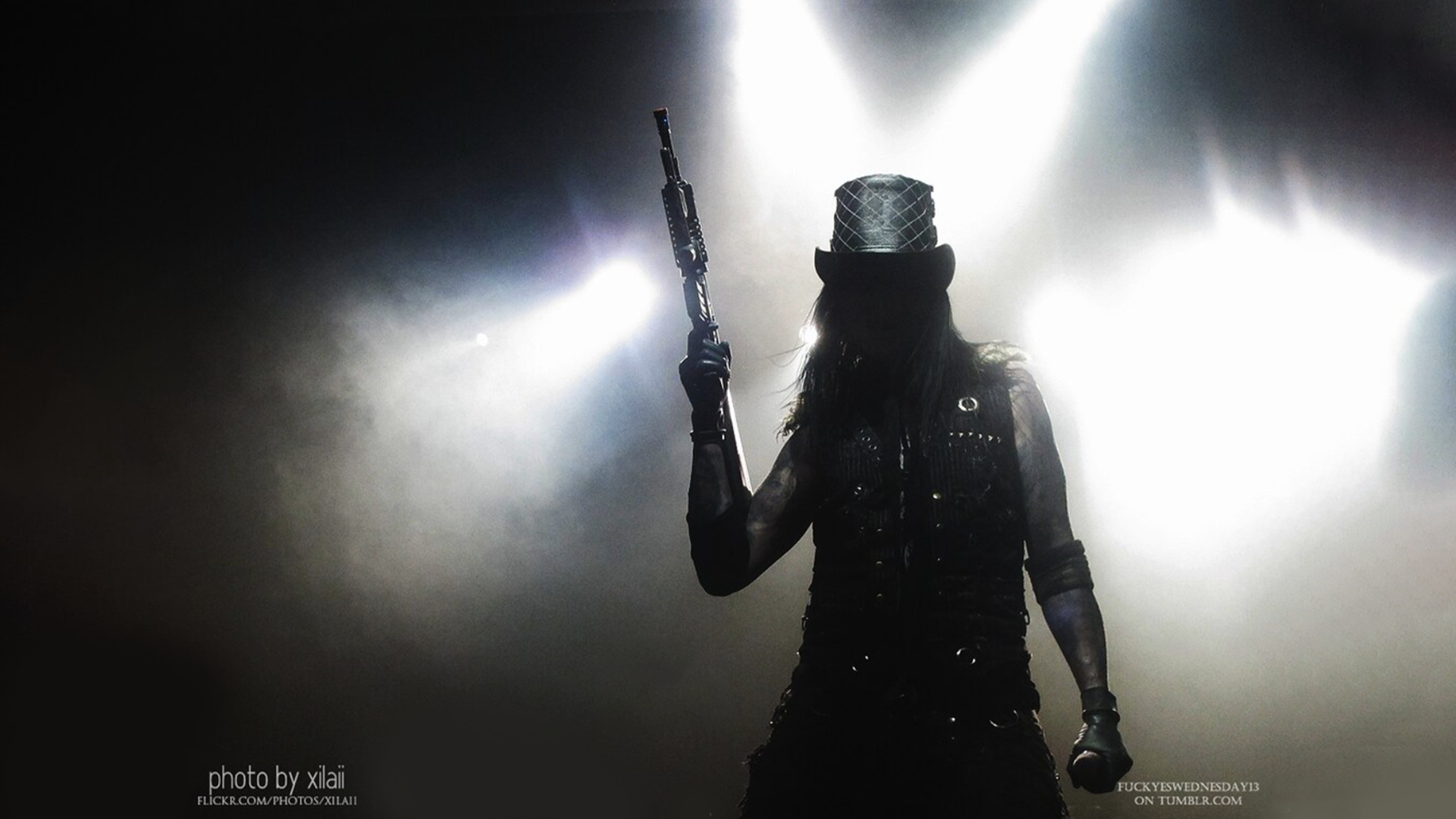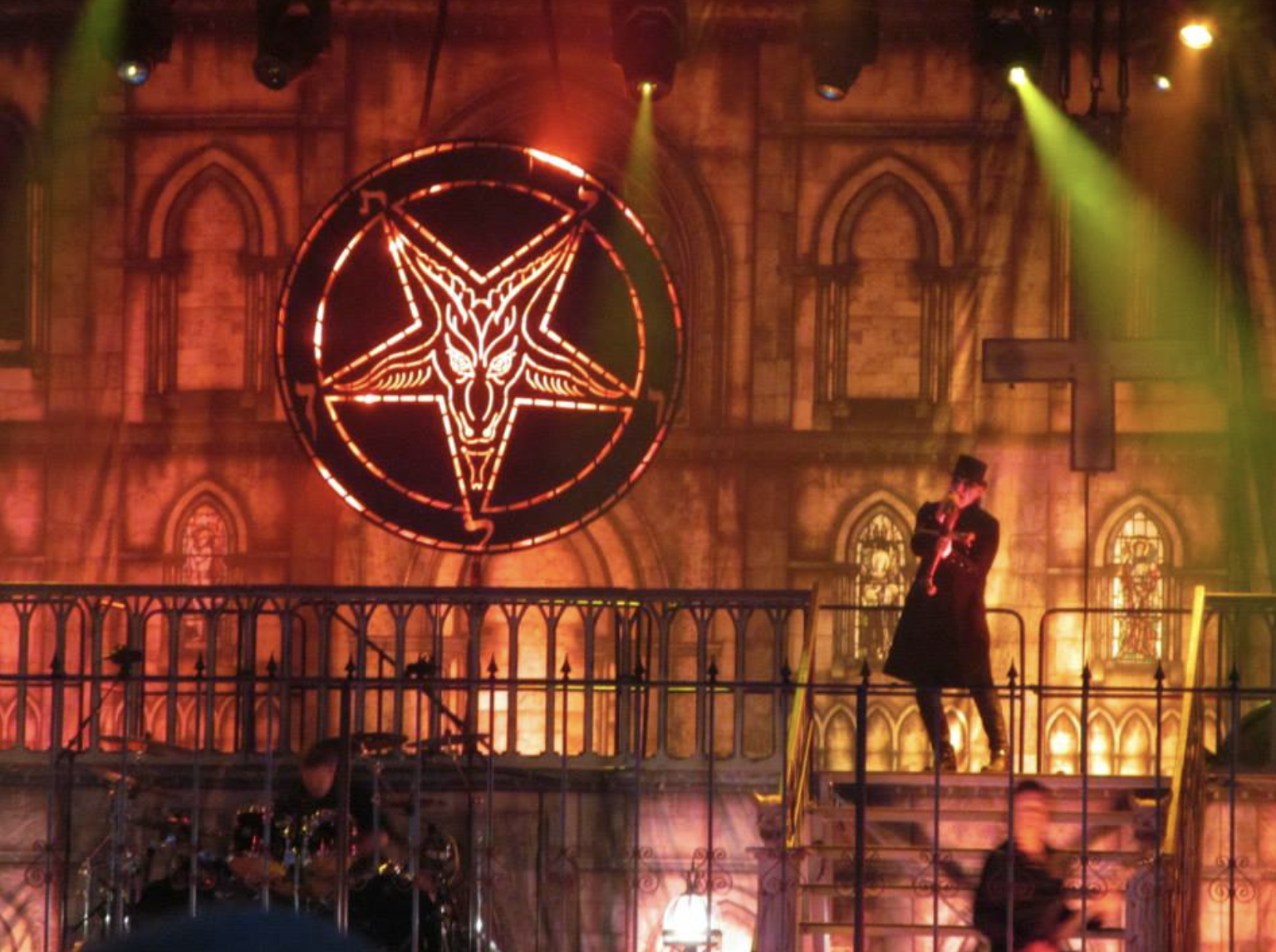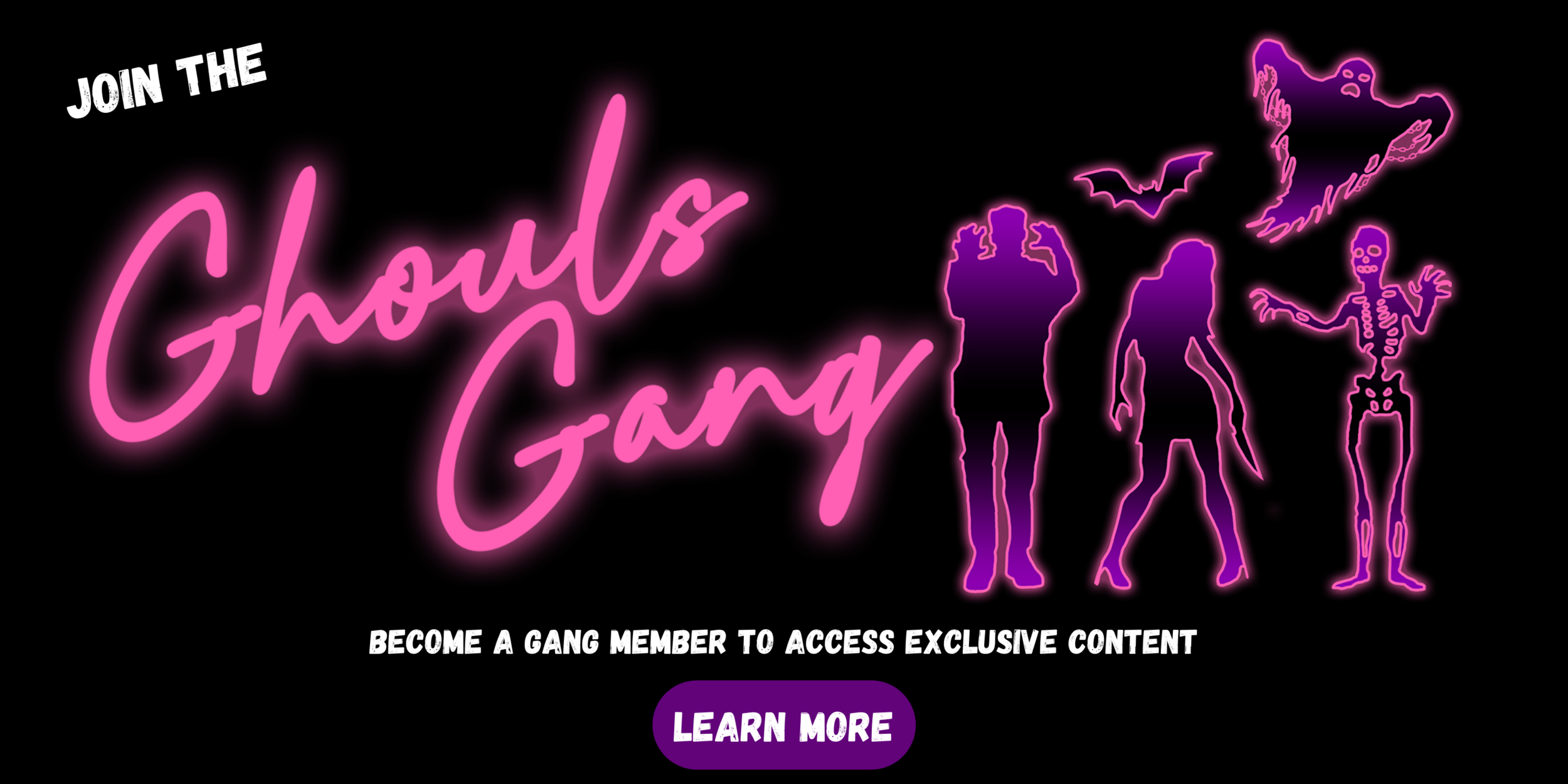[Editorial] The Art of Horror in Metal

Metal and horror have many aspects in common. The passionate fanbase for both genres attend festivals and has created strong communities. Horror and Metal fans often sport clothing depicting their favourite bands or films, almost like a uniform. Both have roots that, could be argued, go further back than others. Director Georges Méliès created the horror The Devil's Castle (1896) and sci-fi A Trip to the Moon (1902), which inspired the Smashing Pumpkins video Tonight, Tonight. Looking further back, the Greek Tragedies often depicted murder and the supernatural, as did Shakespeare, which featured witches, murder and ghosts. Metal’s roots are found in the blues and darker classical music such as Wagner and Bach, which are often used as scores for horrors. Some film fans may recognise compositions Tristan und Isolde and Toccata and Fugue in D minor.
The influence of horror in metal can be seen in the artwork of bands such as Slayer and Autopsy, the lyrics of Cannibal Corpse and Iron Maiden and in various stage shows. Bands such as ‘Ice Nine Kills’ often perform dressed as iconic horror figures such as Freddy Kruger or Michael Myers and have set pieces reflecting these horrors. For example, the red balloons from IT adorning the stage. Horror has been part of metal stage shows, videos and lyrics for years.
LISTEN TO OUR HORROR PODCAST!
![[Ghouls Podcast] Ghouls Watch: Bucket List of the Dead, Blood Drive, Candy Land & more](https://images.squarespace-cdn.com/content/v1/5fe76a518d20536a3fbd7246/1696261000263-58VQFOVWPE363OFGP7RF/GHOULS+WATCH.jpg)
Screaming Jay Hawkins is one of the earliest musicians to have horror elements. Hawkins, whose most famous song I Put a Spell on You, used to arrive on stage in a coffin, dressed in voodoo attire, brought Halloween props on stage and would growl and scream during his performances. These campy theatrics reflected that period of horror dominated by sci-fi and monsters, while Vampira was on the screen. In the 1960s, Arthur Brown shot to fame with the song, Fire (1968). In his performance on Top of the Pops, he emerged declaring in a guttural voice, “I am the God of Hellfire, and I bring you”, before singing Fire with long horns engulfed in flames, corpse paint, and dressed in a similar white attire to Angel in Blood on Satan’s Claw. Music and film were heavily influenced by the rise of the occult in the 1960s, which can be seen in Arthur Brown’s performances. The corpse paint and the high banshee screams are present in modern extreme metal genres.
These characteristics of Arthur Brown could have been an early influence on extreme metal. However, Merciful Fate, which was fronted by King Diamond, is often quoted by musicians such as Metallica and Cradle of Filth as a heavy influence, both of whom King Diamond has collaborated with. King Diamond adorns his face with corpse paint and used a real human skull named Melissa on stage. He would create explosives, fill dolls with pigs’ guts and throw the entrails out at the audience. Black Metal band Watain has been known to have real animal blood and fire on stage and for the audiences to comment on the stench.

At the tail end of the US punk era and the 80s wave of sci-fi horror, including Killer Klowns from Outer Space, Re-Animator, and The Fly, came Gwar. Gwar is a collection of “barbaric interplanetary warriors” who perform violent or sexual acts with satirical themes and squirt various fake bodily fluids on the audience. Each creature has individual characteristics such as Roman armour, oversized metal jaws or udders and their live shows are chaotic and full of cartoonish horror. Shudder recently released a documentary called This is Gwar, directed by Scott Barber. It details the band from their art school beginnings to Dave ‘Oderus Urungus’ Brockie’s death and Gwar’s legacy.
White Zombie was also coming out of the New York punk scene and art school. Named after the 1932 Bela Lugosi film, the band White Zombie would use black and white, handheld footage and shots of classic monsters and home video footage. White Zombie was fronted by Rob Zombie, who went on to become successful in his solo projects and bring his passion for horror into his work. Rob Zombie often has images of Universal monsters across the stage while projecting scenes from films such as Night of the Living Dead and giant figures dancing around dressed as robots or the devil.
These musicians' such as Diamond, Zombie and Black Sabbath, who were named after the 1963 film, paved the way for later bands such as Wednesday 13, among many others, who often cite horror movies in the lyrics, artwork, titles and on stage. The “Duke of Spook”, Wednesday 13, and his solo work, Murderdolls and Frankenstein Drag Queens from the Planet 13, often uses skull-like make-up, devilish masks, Texas Chainsaw Massacre-style aprons and soundbites from classic horror movies. Wednesday’s music has evolved over his career, starting as campy sing-a-longs with tongue in cheek lyrics such as Love at First Fright and I Walked with a Zombie to darker and heavier sounds. Wednesday has made horror part of his trademark by adapting famous horror posters such as Salem’s Lot into band t-shirts and playing horror soundtracks before entering the stage, which some fans like to “play guess the film” too. Other bands have horror figures that they have created especially for the band. One iconic figure in metal is Iron Maiden’s mascot, Eddie. Eddie is a zombie/skeleton figure who has appeared in different guises on Maiden’s covers and T-shirts but can often be seen stomping about on the stage with Maiden and attacking frontman Bruce Dickson. Dickson pulls out Eddie’s heart in one stage show and displays it to the audience. Other times, Dickson can be seen running around holding a skull, reminiscent of Shakespeare’s Hamlet, a story of murder, madness, and ghosts.
LISTEN TO OUR HORROR PODCAST!
Swedish metal band Ghost is iconic for its sound, image and for their ghoulish frontman. Papa Emeritus is the demonic anti-pope fronting a band of nameless ghouls. Their shows are atmospheric, and their songs are on subjects of religion, ritual, and figures such as Elizabeth Bathory. It’s not surprising their first album, Opus Eponymous, shared a record label (Rise Above Records, founded by Cathedral frontman Lee Dorrian) with Satanic doo-wop duo Twin Temple, who have appeared on Boulet Brothers as guest judges and performances and have opened shows for Ghost. These bands refer to occult horror films like The Devil Rides Out. Bands such as In This Moment have also adopted a ritualist style for their performances, with the band selling witchy merchandise and songs such as Whore almost being performed like a sermon. In an interview, Vocalist Maria Brink said her favourite horror is Carrie. Songs such as Big Bad Wolf bring the more seductive performances of In This Moment back to classic monsters. Ghost have fun with their shows, for example, resurrecting a previous Papa to play a sax solo before killing him again, which links back to the humour of horror. Like Eddie from Iron Maiden, masks of Papa Emeritus are also available.
On the subject of masks, Slipknot decided to let their music speak for itself by adorning masks. The masks are of different characters, including a pig, pinhead, a clown and a distorted face. In their earlier career, they wore boiler suits to add to the sense of unity and lack of identification. Each mask has evolved throughout the years and is to fans' anticipation. The horror legend Tom Savini designed one of Corey Taylor’s later masks. Slipknot’s onstage performance isn’t like others mentioned in this article, which either reference horrors directly or have created their own horror characters; Slipknot is the horror. Their performances are raw and unrelenting. From rotten birds to onstage vomiting and fighting, Slipknot feels more like Texas Chainsaw Massacre, violent and dirty, with their drums like a racing heartbeat while the guitars the buzz of the chainsaw. It would be great to see a slasher starring Slipknot. Members of Slipknot have stepped into the world of film. Corey Taylor was in Bad Candy, while Shawn Crahan was in The Devil's Carnival.

Slipknot are not the only band to cross over into horror films. Cradle of Filth starred in Cradle of Fear, Lordi had their own movie called Dark Floors, whilst Rob Zombie has a solid career as a horror director with multiple films (House of 1000 Corpses, The Devils Rejects, Halloween…). Some horror stars have also crossed over into metal, most notably Christopher Lee, who has recorded several metal albums, and Cradle of Filth who has included multiple horror actors on their albums, such as Ingrid Pitt narrating as Countess Bathory on the song Bathory Aria (on the album Cruelty and the Beast) and Doug Bradley, who has appeared on multiple Cradle songs over five albums, Midian, named after the underground city in Nightbreed, Nymphetamine, Thornography, Godspeed on the Devil's Thunder and Existence is Futile. Bradley was also the narrator in the Her Ghost in the Fog video but could not film, so actor David McEwen appeared instead. McEwan also played Kemper in Cradle of Fear.
There’s no denying that Metal and Horror are part of the same family; therefore, the crossover is expected. Both genres attract similar themes in art and humour, and both have been ostracized by the mainstream, finding themselves on banned lists and various court cases, which blamed either Horror or Metal for the actions of others. The performances on metal stages demonstrate how the fan base have crossed over, using humour, satanic imagery, gore, and monsters to do this, and often, Metal can be found on Horror soundtracks. Musicians and film creators have discussed extensively in various interviews, and most recently, the documentary The History of Metal and Horror, their love of each genre and the inspiration that has fuelled their art. The passion and the thrill have kept Horror and Metal fans dedicated all this time together.


![[Ghouls Podcast] Tender Is The Flesh with Zoë Rose Smith, Bel Morrigan and Liz Bishop](https://images.squarespace-cdn.com/content/v1/5fe76a518d20536a3fbd7246/1693769261264-MS4TS4Z4QC1N15IXB4FU/Copy+of+%5BJuly%5D+Antiviral%2C+possesoor+and+infinity+pool.jpg)
![[Ghouls Podcast] Antiviral, Possessor & Infinity Pool with Zoë Rose Smith, Amber T and Iona Smith](https://images.squarespace-cdn.com/content/v1/5fe76a518d20536a3fbd7246/1691238787263-XYRKXW2Z7RWI9AY2V2GX/%5BJuly%5D+Antiviral%2C+possesoor+and+infinity+pool+%281%29.jpg)
![[Ghouls Podcast] Ghouls Watch: Body Horror Recommendations](https://images.squarespace-cdn.com/content/v1/5fe76a518d20536a3fbd7246/1691238687847-L9U434I1U4HZ3QMUI3ZP/%5BJuly%5D+Ghouls+Watch+-+Website+%281%29.jpg)
![[Ghouls Podcast] Ghouls Watch: Bones and All, Suitable Flesh, The Human Centipede & more](https://images.squarespace-cdn.com/content/v1/5fe76a518d20536a3fbd7246/1687855203348-7R2KUSNR6TORG2DKR0JF/%5BJune%5D+Ghouls+Watch+-+Website.jpg)
![[Ghouls Podcast] 3 Original vs. Remake Horror Films with Rebecca McCallum & Kim Morrison](https://images.squarespace-cdn.com/content/v1/5fe76a518d20536a3fbd7246/1685286663069-0Q5RTYJRNWJ3XKS8HXLR/%5BJune%5D+Original+vs.+Remake+Horror+Films.png)
![[Ghouls Podcast] Ghouls Watch: The Devil’s Candy, Morgana, Dead Ringers & more](https://images.squarespace-cdn.com/content/v1/5fe76a518d20536a3fbd7246/1685284429090-5XOOBIOI8S4K6LP5U4EM/%5BMay%5D+Ghouls+Watch+-+Website.png)
![[Ghouls Podcast] The Ruins (2008) with Ash Millman & Zoë Rose Smith](https://images.squarespace-cdn.com/content/v1/5fe76a518d20536a3fbd7246/1684076097566-BE25ZBBECZ7Q2P7R4JT4/The+Ruins.jpg)
![[Ghouls Podcast] Ghouls Watch: Deathproof, Child’s Play, Ghostwatch & more](https://images.squarespace-cdn.com/content/v1/5fe76a518d20536a3fbd7246/1682447065521-DWF4ZNYTSU4NUVL85ZR0/ghouls+watch.png)
![[Ghouls Podcast] 5 Coming-of-Age Horror Film Recommendations](https://images.squarespace-cdn.com/content/v1/5fe76a518d20536a3fbd7246/1681418402835-EMZ93U7CR3BE2AQ1DVH4/S2+EP5.png)
![[Ghouls Podcast] Good For Her Horror Film Recommendations](https://images.squarespace-cdn.com/content/v1/5fe76a518d20536a3fbd7246/1678634497037-W441LL37NW0092IYI57D/Copy+of+Copy+of+GHOULS+PODCAST+THE+LOVED+ONES.jpg)
![[Ghouls Podcast] Ghouls Watch: Severance, Run Sweetheart Run, Splice & more](https://images.squarespace-cdn.com/content/v1/5fe76a518d20536a3fbd7246/1677589685406-YZ9GERUDIE9VZ96FOF10/Copy+of+GHOULS+PODCAST+THE+LOVED+ONES+%281%29.jpg)
![[Ghouls Podcast] The Loved Ones (2009) with Liz Bishop](https://images.squarespace-cdn.com/content/v1/5fe76a518d20536a3fbd7246/1676369735666-56HEK7SVX9L2OTMT3H3E/GHOULS+PODCAST+THE+LOVED+ONES.jpg)
![[Ghouls Podcast] Terrifier (2016) & Terrifier 2 (2022) with Janine Pipe](https://images.squarespace-cdn.com/content/v1/5fe76a518d20536a3fbd7246/1674478017541-0DHH2T9H3MVCAMRBW1O1/_PODCAST+NO+IMAGE+2023+EP+4+%282%29.jpg)
![[Ghouls Podcast] Krampus (2015) with Megan Kenny & Rebecca McCallum](https://images.squarespace-cdn.com/content/v1/5fe76a518d20536a3fbd7246/1672839790368-VYX6LIWC5NVVO8B4CINW/_PODCAST+NO+IMAGE+2023+EP+17.jpg)
![[Ghouls Podcast] Soho Horror Film Review with Hannah Ogilvie & Caitlyn Downs](https://images.squarespace-cdn.com/content/v1/5fe76a518d20536a3fbd7246/1672840392291-XQGQ94ZN9PTC4PK9DTN1/_PODCAST+NO+IMAGE+2023+EP+16.jpg)
![[Ghouls Podcast] The Borderlands (2013) with Jen Handorf](https://images.squarespace-cdn.com/content/v1/5fe76a518d20536a3fbd7246/1672839985316-KPLOVA9NGQDAS8Z6EIM9/_PODCAST+NO+IMAGE+2023+EP+15.jpg)
![[Ghouls Podcast] Soho Horror Film Preview with Hannah Ogilvie & Caitlyn Downs](https://images.squarespace-cdn.com/content/v1/5fe76a518d20536a3fbd7246/1672840411619-IP54V5099H6QU9FG4HJP/_PODCAST+NO+IMAGE+2023+EP+14.jpg)
![[Ghouls Podcast] Halloween Special: 5 Horror Films to Watch This Halloween with Joshua Tonks and Liz Bishop](https://images.squarespace-cdn.com/content/v1/5fe76a518d20536a3fbd7246/1672840351086-2AWFIS211HR6GUY0IB7I/_PODCAST+NO+IMAGE+2023+EP+13.jpg)
![[Ghouls Podcast] Horror Literature with Nina Book Slayer & Alex Bookubus](https://images.squarespace-cdn.com/content/v1/5fe76a518d20536a3fbd7246/1672840273346-ASHBRDHOKRHMGRM9B5TF/_PODCAST+NO+IMAGE+2023+EP+12.jpg)
![[Ghouls Podcast] Alien with Tim Coleman and Rebecca McCallum](https://images.squarespace-cdn.com/content/v1/5fe76a518d20536a3fbd7246/1672839878802-LR40C39YGO3Q69UCCM62/_PODCAST+NO+IMAGE+2023+EP+11.jpg)
![[Ghouls Podcast] Final Destination with Jenn Adams and Rebecca McCallum](https://images.squarespace-cdn.com/content/v1/5fe76a518d20536a3fbd7246/1672839916928-KK9CTT0OAKACXLGYA9DX/_PODCAST+NO+IMAGE+2023+EP+10.jpg)
![[Ghouls Podcast] Dark Water with Melissa Cox and Rebecca McCallum](https://images.squarespace-cdn.com/content/v1/5fe76a518d20536a3fbd7246/1672839939630-BLPIHIDVRJE9FC1A9BRZ/_PODCAST+NO+IMAGE+2023+EP+9.jpg)
![[Ghouls Podcast] Noroi: The Curse & Perfect Blue with Sarah Miles and Ygraine Hackett-Cantabrana](https://images.squarespace-cdn.com/content/v1/5fe76a518d20536a3fbd7246/1682950816911-7ZCMPP8H0BSUPCPZYQ07/_PODCAST%2BNO%2BIMAGE%2B2023%2BEP%2B8.jpg)
![[Ghouls Podcast] The Wicker Man with Lakkaya Palmer](https://images.squarespace-cdn.com/content/v1/5fe76a518d20536a3fbd7246/1672839898764-VIYDC7ZD8QTBCGK562NL/_PODCAST+NO+IMAGE+2023+EP+7.jpg)
![[Ghouls Podcast] You Are Not My Mother with Ygraine Hackett-Cantabrana](https://images.squarespace-cdn.com/content/v1/5fe76a518d20536a3fbd7246/1672840165939-VP0CIKOM4KPX67JLNHDB/_PODCAST+NO+IMAGE+2023+EP+6.jpg)
![[Ghouls Podcast] Interview with a Vampire & Bram Stoker’s Dracula with Dr. Harriet Fletcher](https://images.squarespace-cdn.com/content/v1/5fe76a518d20536a3fbd7246/1672840081289-714FCGZ8MYU4BUG9RRWC/Copy+of++PODCAST+NO+IMAGE+2023+EP+5.jpg)
![[Ghouls Podcast] Let The Right One in with Iona Smith](https://images.squarespace-cdn.com/content/v1/5fe76a518d20536a3fbd7246/1672840623893-Y1MMPNYPDEPGI9J5BJC8/_PODCAST+NO+IMAGE+2023+EP+4+%281%29.jpg)





















![[Ghouls Podcast] The Invitation with Hannah Ogilvie](https://images.squarespace-cdn.com/content/v1/5fe76a518d20536a3fbd7246/1672838145193-OW65KNC5POZN5FE5KZHK/_PODCAST+NO+IMAGE+2023+EP+3.jpg)
![[Ghouls Podcast] Trouble Every Day with Amber T](https://images.squarespace-cdn.com/content/v1/5fe76a518d20536a3fbd7246/1672837846372-19MMMAF5WCOORZXNRIY3/_PODCAST+NO+IMAGE+2023+EP+2.jpg)
![[Editorial] Soho Horror Film Festival: Interview with Aimee Kuge on Cannibal Mukbang](https://images.squarespace-cdn.com/content/v1/5fe76a518d20536a3fbd7246/1701808004722-9M8SZ2UXY52QBQBR4NTI/img20230818_15150780.JPG)
![[Editorial] 10 Films & Events to Catch at Soho Horror Film Fest 2023](https://images.squarespace-cdn.com/content/v1/5fe76a518d20536a3fbd7246/1700819417135-299R7L4P0B676AD3RO1X/Screenshot+2023-11-24+at+09.41.52.png)
![[Editorial] 9 Horror Nintendo Switch Games To Play](https://images.squarespace-cdn.com/content/v1/5fe76a518d20536a3fbd7246/1697214470057-3XZXX8N4LYIMDFWS6Z3P/Screenshot+2023-10-13+at+17.20.13.png)
![[Mother of Fears] Mothering in Silence in A Quiet Place (2018)](https://images.squarespace-cdn.com/content/v1/5fe76a518d20536a3fbd7246/1696445921315-HZJ2DZYQIH6VVWXBO2YL/Screenshot+2023-10-04+at+19.52.29.png)
![[Event Review] Highlights from Mayhem Film Festival 2023](https://images.squarespace-cdn.com/content/v1/5fe76a518d20536a3fbd7246/1697624582491-MPT2VB9RRGU6OG7L6UKL/Mayhem+2023.jpg)
![[Editorial] Mayhem Festival: Interview with Thomas Sainsbury on Loop Track (2023)](https://images.squarespace-cdn.com/content/v1/5fe76a518d20536a3fbd7246/1697186472899-WC4RR0TW7L7LMFEBGPA2/Tom+Sainsbury.jpg)
